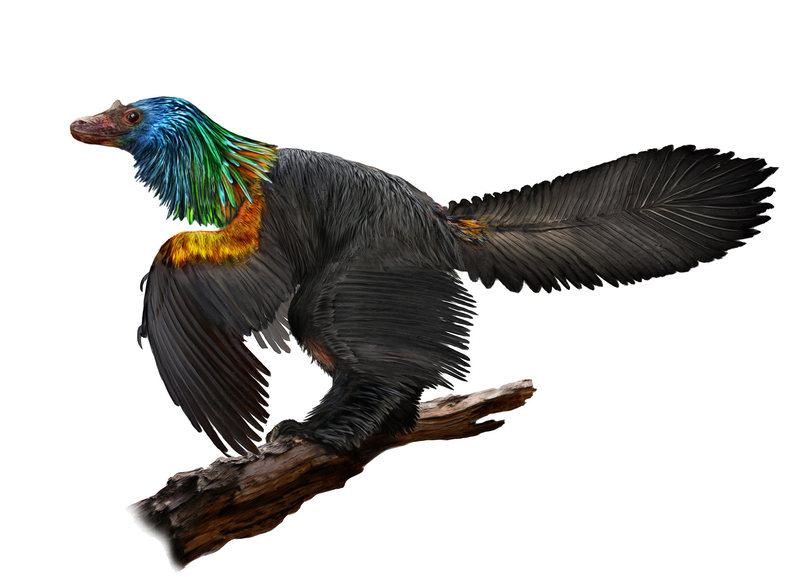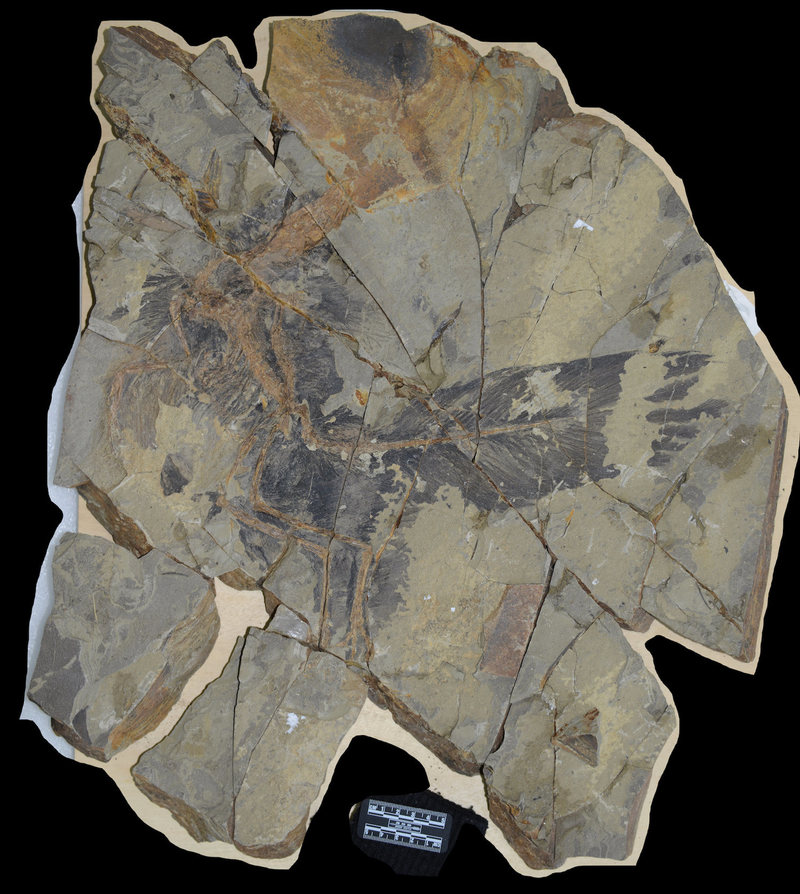Caihong juji: This Chinese 'Rainbow Dinosaur' had Iridescent Feathers like Hummingbirds

Newly discovered Caihong juji, a winged dinosaur that roamed what is now China around 161 million years ago, was likely bursting with color—a shock of blue and green around its face, and streaks of orange highlighting its wings and tail. The duck-sized theropod has already been christened with the Mandarin word for “rainbow.”
Microscopic structures in the exquisitely preserved, nearly complete fossil unearthed in Hebei Province indicated that it boasted iridescent feathers, particularly on its head, neck and chest, with colors that shimmered and shifted in the light, like those of hummingbirds.
The discovery “suggests a more colorful Jurassic World than we previously imagined,” said evolutionary biologist Chad Eliason of the Field Museum in Chicago, one of the researchers in the study published in the journal Nature Communications.

Using powerful microscopes, the scientists detected within the feathers the remnants of organelles called melanosomes responsible for pigmentation. Their shape determines the color. Caihong’s feathers had pancake-shaped melanosomes similar to those of hummingbirds with iridescent feathers.
Much of its body had dark feathers, but ribbon-like iridescent feathers covered its head and neck. While it possessed many bird-like characteristics, the researchers doubted it could actually get airborne. Its plumage could have attracted mates while also providing insulation.

Caihong was a two-legged predator with a Velociraptor-like skull and sharp teeth, probably hunting small mammals and lizards. It had crests above its eyes that looked like bony eyebrows.
Many dinosaurs possessed feathers. Birds evolved from small feathered dinosaurs near the end of the Jurassic Period. Caihong had fuzzy feathers and pennaceous ones, those that look like writing quills. It is the earliest-known creature with asymmetrical feathers, a trait used by birds to steer when flying. Caihong’s were on its tail, suggesting tail feathers, not arm feathers, were first utilized for aerodynamic locomotion.
“It is extremely similar to some early birds such as Archaeopteryx,” said paleontologist Xing Xu of the Chinese Academy of Sciences, referring to the earliest-known bird, which lived 150 million years ago. “Its forelimbs were configured like wings. To be honest, I am not sure what function the feathers have, and I don’t think that you can completely exclude the possibility that the feathers helped the animal to get in the air.”

Asked what someone might say upon seeing Caihong, University of Texas paleontologist Julia Clarke said, “‘Wow!’ And if they are anything like me, they might want one as a pet. Not suitable for children.”
The dinosaur’s full scientific name, Caihong juji, means “rainbow with a big crest.”
Source: www.reuters.com








